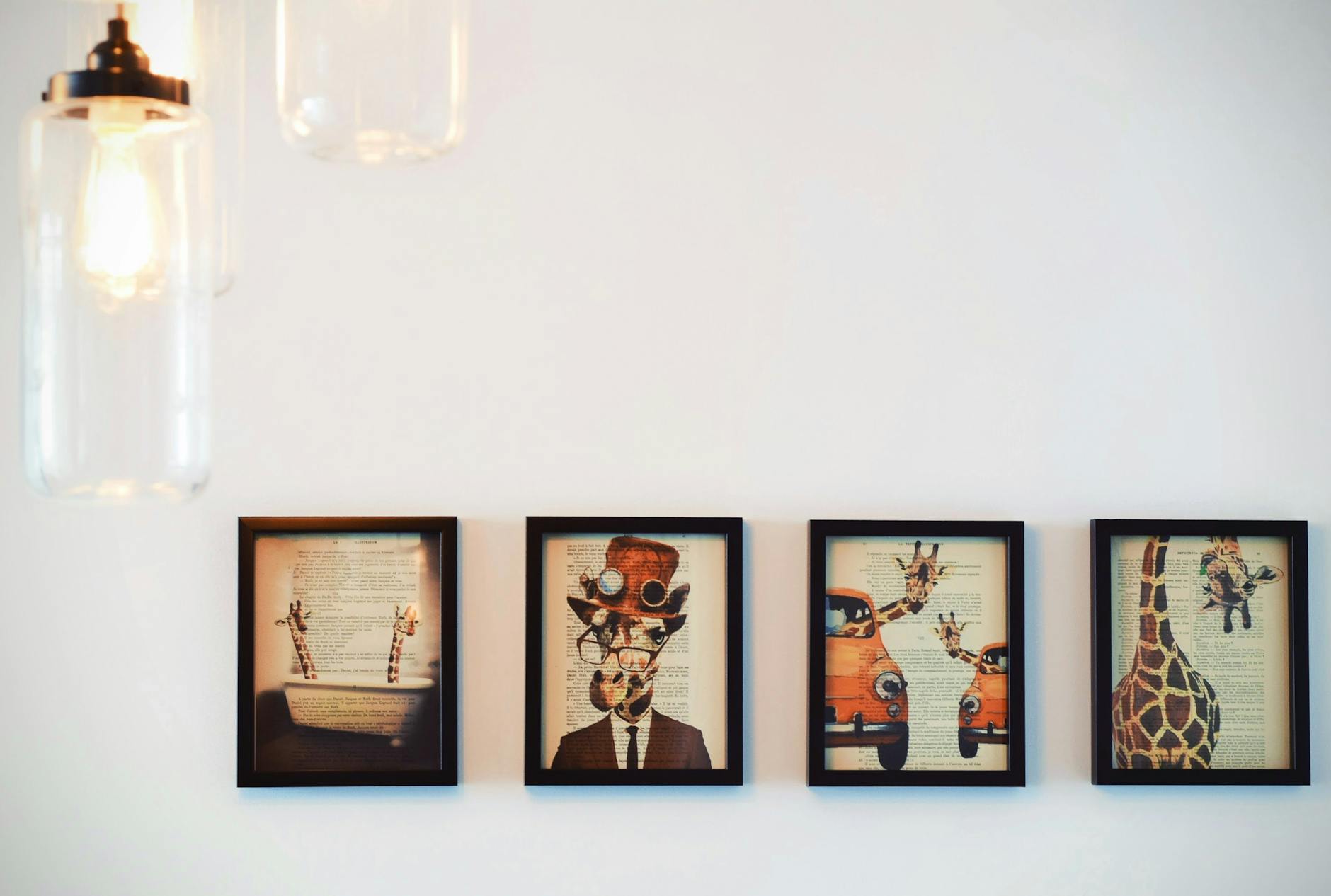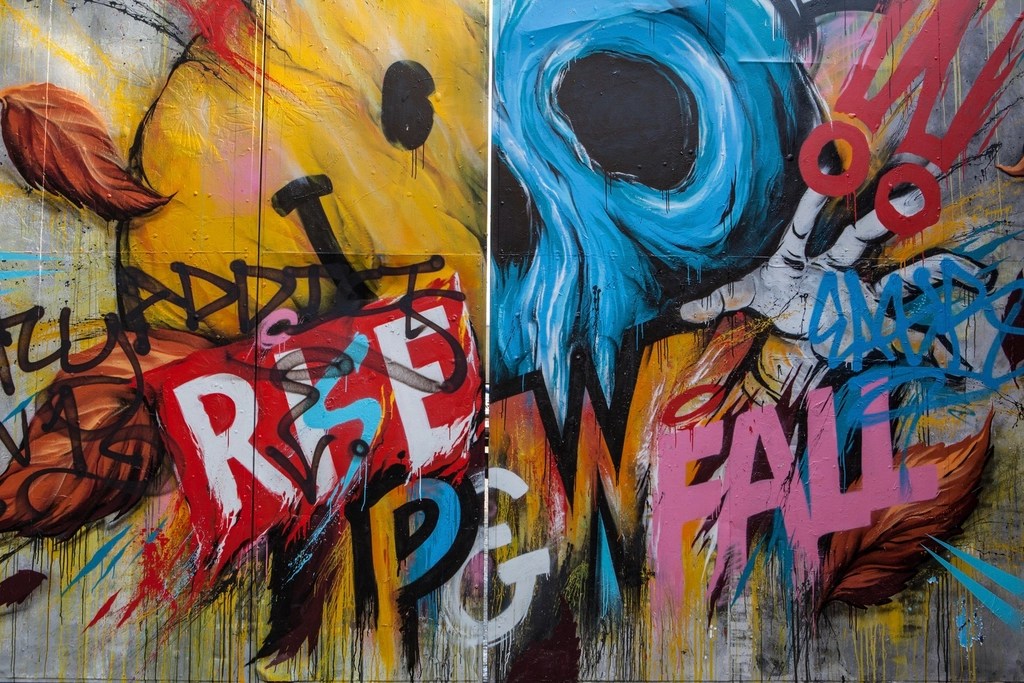Over a decade ago, I thought art was beyond critical reproach. A creation is just whatever an artist can dream up, so naysayers should stop being so critical, right? But these days I have been thinking: how can a critic analyze a work of art if it is neither subjective nor objective? After all, somebody will always come around and say, “Well, man, all art is subjective, so there’s that…” And, there’s actually a fair amount of discourse on the subject.
Nevertheless, I believe the answer is that criticism needs a lens. I believe this because in order to derive meaning, we have to study art subjectively through an objective lens. In this post, we are going to explore art as being “objective” and simultaneously “subjective.” In this way, we will explore how that approach can create a greater appreciation for art itself.
How We Guide Our View of Art
To begin, we have to ask ourselves if there is true freedom in artistic expression. As pointed out by multiple studies, humans don’t seem to have free will in basic decision-making processes. Consequently, artistic expression should be no different.
For example, as stated by Seth Schwartz in the article “Do We Have Free Will?” that appeared in Psychology Today, “There is no consensus within psychology as to whether we really do have free will—although much of our field seems to assume that we don’t. Freud and Skinner didn’t agree on very much, but one thing they did agree on was that human behavior was determined by influences within or outside the person” (Schwartz).
In other words, we can not control our own actions or the world around us, thus it stands to reason that external forces guide our decisions. That doesn’t leave much room for honest creative expression, especially if it is the external forces guiding our own work and not some divine creative spark.

Moreover: “Many neuroscientists, armed with functional magnetic resonance imaging (fMRI) and other brain scanning tools, argue that, now that we can peer into the brain, we can see that there is no ‘agent’ there making choices” (Schwartz). What this means is that internal and external factors influence humans, from propaganda to the reptilian part of our brain. The advertisements we see daily and the little biological impulses are what drive our fate, rather than our own creative decision-making. We are persuaded to purchase the new iPhone, and our bodies tell us to flee when there is trouble. We aren’t making either of those decisions on our own.
But, what does this all mean?
We are Bound by Form, Structure, and Prior Knowledge
To begin, in the context of art, the creator is not making deliberate choices for their artistic endeavors. Rather, they are taking the external factors of things they’ve seen or heard and using that as a guide. Think about a painter who is using a reference to complete their masterpiece, or a writer who is using an established genre to create their story. These previously mentioned “external factors” can be defined as the artistic forms and structures the artist has already learned. It may look new and interesting, but unfortunately the conventions of an artistic genre and medium are preestablished, even if your friend is telling you a new musician has combined two genres to come up with something wildly different. Unfortunately, it’s probably already out there in the world someplace.
In season 4, episode 4 of the television series Frasier, both Frasier and Niles realize that they are in the presence of T. H. Houghton, a fictious, albeit reclusive author, who wrote a single masterpiece and never published again. When he leaves his newest manuscript behind, the brothers decide to read it out of curiosity. They realize it is another masterpiece and tell the author how they feel about it when he returns to get his bag.
After Frasier and Niles ask him whether he intended the structure to be lifted from Dante, Houghton responds: “Of course not. This confirms my worst fear. I have nothing original left to say. I’m an empty shell. I was a fool to think I had a second book in me. [reading from his manuscript] ‘The winters were harsh on the farm.’ Well, here’s something to warm them up [starts throwing the pages into the fire].”
The world grounds our prior knowledge (the forms and structures we learn) into reaffirmation, which includes the things school taught us.
“… viewing and understanding art does have roots in objectivity; that is in the mathematical reality of physics,” writes author Chun Park in a piece for Medium. “While art may be viewed subjectively as a complex system of colors, form and perception, the underlying basis of that subjectivity is formed by an objective and mathematical reality of color theory, ratio, proportion, and to a lesser extent, composition and other elements that make up art.”
Essentially, we have an existing rubric that we use to understand the tools for the creation of art, such as colors, dimensions, length, etc. As soon as that art leaves the artist and is ready for public consumption, interpretation goes from objective to subjective. In this way, the audience is switching their brain from a mechanical point of analysis to a figurative and metaphorical one simply as a trained mode of interpretation. In this way, art isn’t subjective. Humans are.
Art Needs a Creator, a Creation, and an Audience

One hypothetical : an artist creates something new merely by accident. What if they weren’t constrained by form and structure, and just Jackson-Pollocked their way to something truly original? It is fair to say that by creating a work of art in a random fashion, one could essentially create something new. This could include a new painting, album, or what have you. But what are the chances it is actually good by conventional standards? Art is deemed good by one of the values ascribed to its very being: audience.
The other two, the creator and the creation, can certainly still exist. But if that third component does not, then the art may find no psychological or emotional purchase. Likewise, we can’t have an audience and an artistic work without artists. Just like we can’t have an audience and an artist without a work. The symbiotic three-way dance of that conversion from nothing to something is certainly enchanting.
So, a creator may have themselves a creation, but they may have no audience. That is, while the art is “new,” and unbound by prior genre constraints, it’s still not that good by conventional standards. Yet, even meritless schlock provides merit to some. For instance, there is a market for B-Movies because they provide enjoyment for a specific audience (myself included) and there’s always Free Jazz listeners to consider. These constraints, or lack thereof cause a sort of cognitive dissonance. Often times, it might even be fighting back against the very nature of subjectivity.
“I think Captain Beefheart’s Trout Mask Replica has a great deal of musical merit.” But, do you really?
Criticism Needs a Lens
Criticism needs to help the audience understand a piece of artwork from a framework in order to provide new understanding. You may be reading this and thinking, “yea, I know,” but if you go search for a critique in your local paper, or on the web, you may find the complete lack of understanding of critical lenses apparent and, like me, irresponsible. With such considerations, what I am asking is that artists should embrace both encouraging criticism and constructive criticism with some amount of equity. Or, in other words, we should be embracing both subjectivity and objectivity in art itself.

For instance, using formalism in examining the lines, colors, textures in artwork, and melody and harmony in music helps us understand the conventions of the artistic piece itself. In this way, you are objectively analyzing how the art operates on a structural level. Likewise, we can analyze paintings by how it reflects society by implementing critical theory, or we could even analyze the music industry through a Marxist lens to see how pop music hinders community and cultural evolution by coopting our values for commodification.
By following through with these types of lenses, we are giving our subjective opinions (our interpretations) without using subjectivity as a crutch because we want to spare feelings or engage with art as though it is this freeform thing that simply materializes out of thin air.
Conclusion
You can say art is subjective, but you should also criticize it for its flaws objectively. You can say some art is new and original, but you can also say it lacks conventional appeasement. You can say art has value, but you should also look at what it steals and who it harms.
Truly, we can look at art and say that it’s “subjective,” and so that gives it some freedom from scrutiny, but the merit of different critical approaches appeals to me more, whether that be New Criticism, New Historicism, Gender Studies and many others. These approaches inform me of art’s value and doesn’t devalue it by validating inappropriate and irresponsible (often times misleading) beliefs about art that in our current system values money and shareholder profits over social history and experience.
Works Cited
Schwartz, Seth Ph.D. “Do We Have Free Will? Is free choice real, or is it just an allusion?” Psychology Today. Nov. 19, 2013. Web.
Park, Chun. “To Be Truthful, Art Is Not Subjective.” Medium.com. July 4, 2017. Web.





Leave a comment